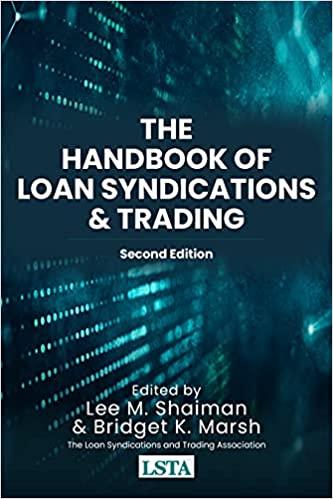Question
The Special Products Division of Intermodular Semiconductor Systems has received a Request for Quotation from Allied Intercontinental Corporation for 100 deep sea semiconductor electrotransponders, a
The Special Products Division of Intermodular Semiconductor Systems has received a Request for Quotation from Allied Intercontinental Corporation for 100 deep sea semiconductor electrotransponders, a specialized instrument used in testing undersea engineered structures. While Intermodular Semiconductor Systems has never produced deep sea electrotransponders, they have manufactured subsurface towed transponders, and it is clear that they could make an electrotransponder that meets Allied's specifications. However, the production cost is uncertain due to their lack of experience with this particular type of transponder. Furthermore, Allied has also requested a quotation from the Undersea Systems Division of General Electrodevices. Intermodular Semiconductor Systems and General Electrodevices are the only companies capable of producing the electrotransponders within the time frame required to meet the construction schedule for Allied's new undersea habitat project. Mack Reynolds, the Manager of the Special Products Division, must decide whether to bid or not, and if Intermodular Semiconductor Systems does submit a bid, what the quoted price should be. He has assembled a project team consisting of Elizabeth Iron from manufacturing and John Traveler from marketing to assist with the analysis. Daniel A. Analyst, a consulting decision analyst, has also been called in to assist with the analysis. Analyst: For this preliminary analysis, we have agreed to consider only a small number of different possible bids, production costs, and General Electrodevices bids. Reynolds: That's correct. We will look at possible per-unit bids of $3,000, $5,000, and $7,000. We will look at possible production costs of $2,000, $4,000, and $6,000 per unit, and possible per-unit bids by General Electrodevices of $4,000, $6,000, and $8,000. Iron: There is quite a bit of uncertainty about the cost of producing the electrotransponders. I'd say there is a 50% chance we can produce them in a volume of 100 units at $4,000 per unit. However, that still leaves a 50% chance that they will either be $2,000 or $6,000 per unit. Analyst: Is one of these more likely than the other? Iron: No. It's equally likely to be either $2,000 or $6,000. We don't have much experience with deep sea transponders. Our experience with subsurface towed transponders is relevant, but it may take some effort to make units that hold up to the pressure down deep. I'm sure we can do it, but it may be expensive. Analyst: Could you do some type of cost-plus contract? Reynolds: No way! This isn't the defense business. Once we commit, we have to produce at a fixed price. Allied would take us to court otherwise. They're tough cookies, but they pay their bills on time. Iron: I want to emphasize that there is no problem making the electrotransponders and meeting Allied's schedule. The real issue is what type of material we have to use to take the pressure. We may be able to use molyaluminum like we do in the subsurface towed units in which case the cost will be lower. If we have to go to molyzirconium, then it will be more expensive. Most likely, we will end up using some of each, which will put the price in the middle. Analyst: What is General Electrodevices likely to bid? Traveler: They have more experience than we do with this sort of product. They have never made deep sea electrotransponders, but they have done a variety of other deep sea products. I spent some time with Elizabeth discussing their experience, and also reviewed what they did on a couple of recent bids. I'd say there is a 50% chance they will bid $6,000 per unit. If not, they are more likely to bid low than high|there is about a 35% percent chance they will bid $4,000 per unit. Analyst: So that means there is 15% chance they will bid $8,000. Traveler: Yes. Reynolds: Suppose we had a better handle on our production costs. Would that give us more of an idea what General Electrodevices would bid? Iron: No. They use graphite-based materials to reinforce their transponders. The cost structure for that type of production doesn't have any relationship to our system using moly alloys. (i) Draw a decision tree for the decision that Reynolds must make. (ii) Determine the expected values for each of the alternatives, and specify which alternative Reynolds should select if he uses expected value as a decision criterion.
Step by Step Solution
There are 3 Steps involved in it
Step: 1

Get Instant Access to Expert-Tailored Solutions
See step-by-step solutions with expert insights and AI powered tools for academic success
Step: 2

Step: 3

Ace Your Homework with AI
Get the answers you need in no time with our AI-driven, step-by-step assistance
Get Started


